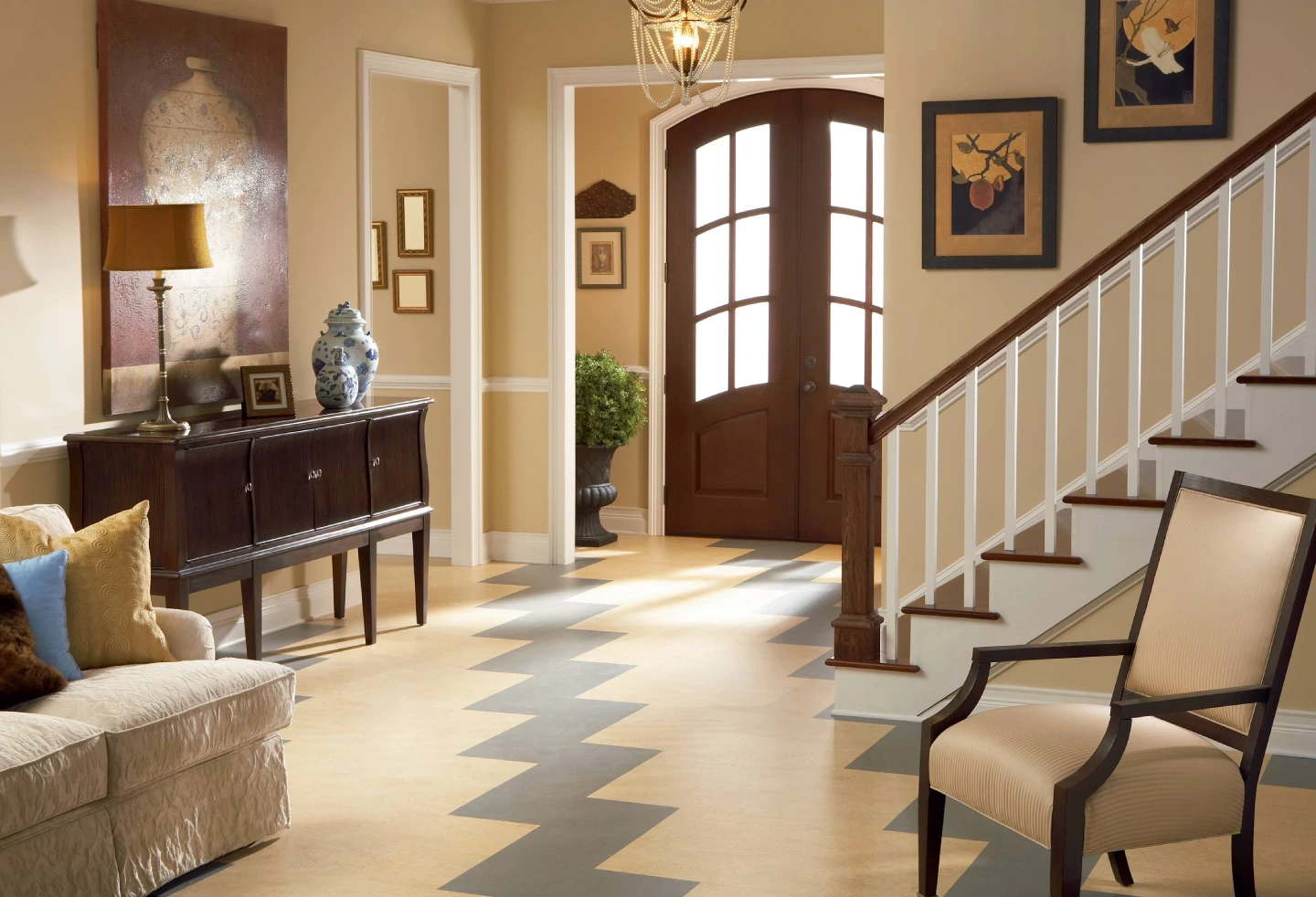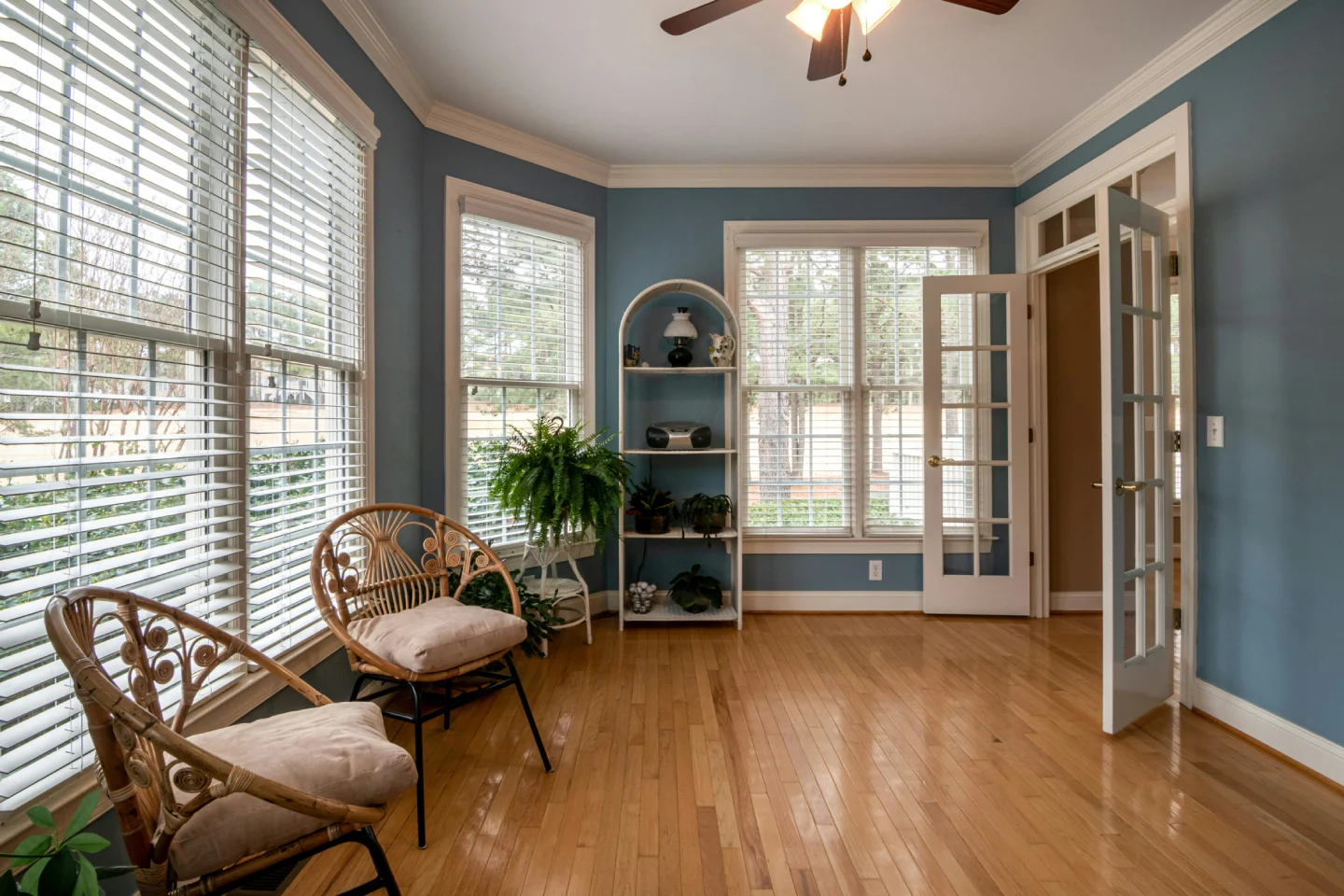Sustainable and Eco-Friendly Flooring Material

Awareness of the environment and ecosystem preservation has been a priority for many, and rightfully so. Using green products and eco-friendly materials will help with keeping our plant healthy. Incorporating such mindset in industries such as construction will have a huge impact on our ecosystem.
Not to mention that such features will be an added value to our building both now and for many years to come. A home built with eco-friendly material is a much safer place for its residents, health-wise. If you ask us, the best place to start with is the floors.
When choosing the best flooring material type for your house, you want it to be reliable, easy to clean, and sustainable. There are many green, eco-friendly materials that fit the bill, and having a variety of choices will be handy for your design. You need to choose what is best for your project, and at the same time, you can help with preserving our ecosystem.
What is the most eco-friendly type of flooring?
What are the features that you need to take note of when choosing your eco-friendly flooring?
Firstly, materials. What has been used to manufacture your flooring of choice? Something natural, hopefully, and something you can renew easily. Does the manufacturer supply their materials legally and ethically? How about recycling? That’s always a plus with us.
Second, how long will the flooring last for you? You wouldn’t want anything that gets worn down in just a few years; not only does it go against the green way, but it’s not financially suitable either. Some of these materials are not biodegradable and will cause a lot of harm to our environment.
Last but not least, pay attention to its toxicity. Matters such as adhesives or finishes are considered toxic, meaning they contain a high level of VOCs or volatile organic chemicals. These materials will cause air pollution in your building and are bad for anyone frequenting those sites. Do note the VOC levels before choosing your flooring.
Eco-friendly Flooring Options
There are a variety of choices you could consider for your floorings, each packed with its own set of pros and cons. We will give you a brief intro on some of these. Be sure to learn about them in detail before making your choice, though.
Bamboo

Bamboo is a trend in green products for a reason: compared to hardwood trees, bamboos mature in about 3 to 5 years and have a much faster growth rate. Yet they provide the best of what hardwood floors offer, too. They have a traditional look, are long-lasting, durable, and resistant to stains, and come in different textures and colors. However, you should be aware of one little fact: bamboo grows in tropical regions. This means that, based on where you live, the distribution process may still cause a lot of carbon pollution.
Cork
Remember those bulletin boards and wine bottles sealed with corks? Yes, that’s it. Cork flooring has been used in the flooring industry for a while now and is definitely on the rise. Did you know that while making cork, no trees would be cut? That’s true. They are made of the cork oak tree barks, and the trees will be left standing. Also, it is considered a remarkably renewable source since the bark will grow in 3 years. A recyclable option, too, since a considerable percentage of corks are made using corks of wine bottles. Cork is a natural mold, mitten, and other allergen repellent, which means better air quality in your home.
Linoleum

Some decades back, linoleum fell out of favor: its design was considered outdated, and it was believed to contain high levels of VOCs. Yet it’s been gaining more popularity these years. Linoleum is made of biodegradable materials such as linseed oil, tree resin, and cork dust. A flame-retardant and moisture-resistant material, linoleum is highly renewable and very long-lasting. No worries about the outdated designs either: manufacturers have made a variety of designs and colors that better fit our modern tastes.
Recycled Materials
There are manufacturers producing floorings made entirely of recycled materials. Reclaimed hardwood, recycled glass, and polyethylene terephthalate (PET) carpets are some examples of such recycled flooring. Reclaimed hardwood will give you the same gorgeous look as the hardwood floors, glass tiles add coloring to your designs, and PET carpets are very strong and endurable. PET carpets can be made using a lot of materials, such as plastic bottles, tires, etc.
Engineered Hardwood
This option is all-compassing as far as eco-friendly materials go. Engenders use solid hardwood flooring as a veneer and use plywood for its core. The final result will be made of real wood that is beautiful, endurable, and eco-friendly since fewer hardwood trees, which are slow-growing, would have been used. Some manufacturers use recycled material as the core, making it even more sustainable. Looking just like the real hardwood floorings due to the veneer, it will be both long-lasting and add a higher market value to your property. This flooring will have a lower VOC level, too. Do not mind choosing nontoxic and green finishes and stains, and you will keep your air clean from VOCs.
Eco-friendly Waterproof Flooring Material

Vinyl is the to-go, entirely water-resistant option when choosing waterproof flooring. Vinyl floorings have not been left out of the green trend. With advanced technology, these had been made to fit the green way much better. Vinyl is very durable, affordable, and 100 percent waterproof. Many options use more nature-friendly or recycled material with lower levels of VOCs.
Stone floorings are another option to consider when one needs perfect water resistance. Stone floorings are made of natural material, and if you choose eco-friendly finishes and sealants, it will go a long way in making your choice even more “Green.”
Durable floorings are also highly water resistant. Wood flooring is an example of such. Whether it be hardwood, bamboo, or engineered hardwood, these are all highly resistant to water and very durable. The same goes for some eco-friendly manufactured laminate floorings.
What is the most nontoxic flooring?
First of all, what is toxic flooring? We talked about VOCs a while back, but those are not the only toxins. Certain types of vinyl and laminate floorings, for example, contain processed plastic or chemicals such as cadmium, lead, etc. These can lead to toxic fumes and low air quality for the building.
So, nontoxic materials are natural and free from harmful chemicals. We usually call these “low VOC,” which can include various materials, from wood to natural stones.
Solid hardwood flooring is the least toxic kind of flooring one can find. This is the most natural material and is highly durable. You can use options such as 100% FSC-certified wood floors since they come from legally sustainable sources. However, it will not be the best option when it comes to water resistance.
The same goes for engineered hardwood flooring, though it is more durable and stable. Since it is made of real wood, it has 0 to low VOC levels. Ceramic and stone tiles are another safe option. However, you do have to pay mind to the finishes and sealants used since they could have high VOCs. Vinyl and laminate floorings are usually considered to be high VOC, yet many good-quality ones have a highly reduced VOC level.




Comments